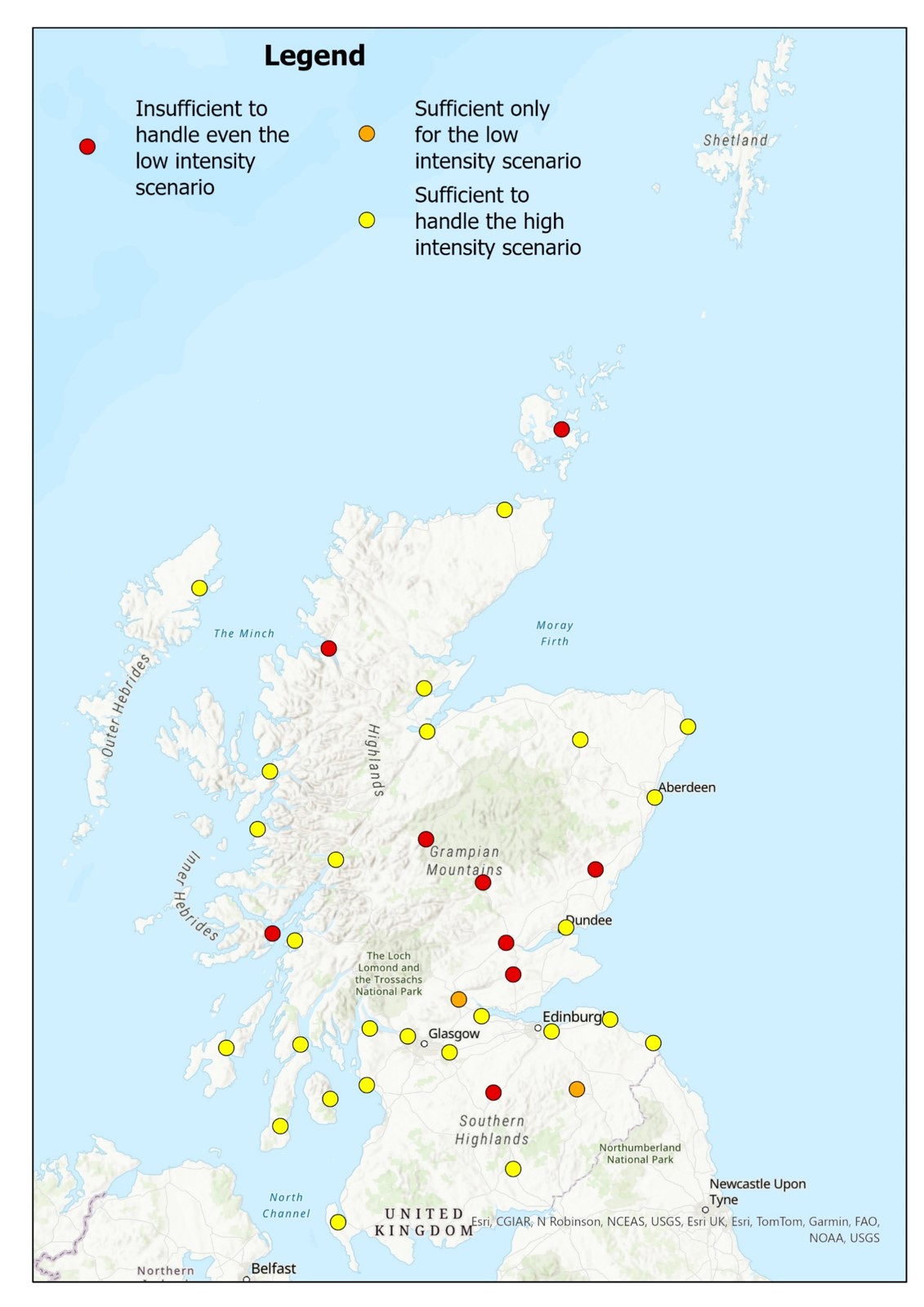Grid Infrastructure
To determine whether there is sufficient energy infrastructure to support the identified optimal charging locations for the current fleet data set, several primary substations were identified close to each proposed charging location. Data from Distribution Network Operators (DNOs) was used to understand expected headroom (unutilised grid capacity) at each of these primary substations. Our analysis here is based on the DNO forecasts for the 2025/26 horizon.
The model predicts the maximum number of charging events per day at each charging location for the current small data set. Two scenarios were considered. A high intensity scenario where trucks arrive for charging in two concentrated peak periods and a low intensity scenario where truck arrivals are spread out across four charging periods over the day.
For each scenario, the expected total power draw at the primary substation was calculated. The calculated power demand in each scenario was compared to the primary substation’s existing headroom to identify locations where there may currently be a shortage of capacity.
Substations are colour-coded based on their current headroom availability (Figure 4):
- Yellow: Sufficient headroom to handle even the high intensity scenario (68% of all substations based on available data).
- Amber: Headroom is sufficient only for the low intensity scenario. Upgrades might be necessary depending on future demand projections (5.2% of all substations based on available data).
- Red: Insufficient headroom to handle even the low intensity scenario. Upgrades are likely required (26.4% of all substations based on available data).
The substations identified here are the most likely to require upgrade; many more substations may require upgrade once the full logistics industry fleet data is included in the model.
The critical substations identified are:
- Milnathort
- Inchbare
- Symington
- Kirkwall
- Burghmuir
- Ullapool
- Lochdonhead
- Dalwhinnie
- Pitlochry
Precise locations are given in the Technical Report.
There may be situations in which the DNO can still provide for rapid charging, e.g. using flexibility services, whilst minimising reinforcement, despite low capacity.
